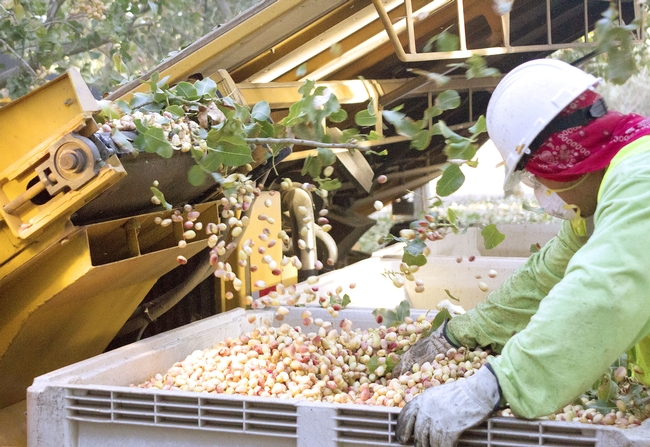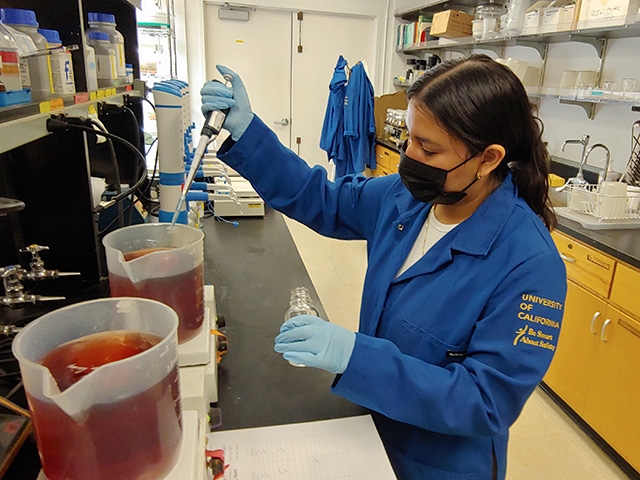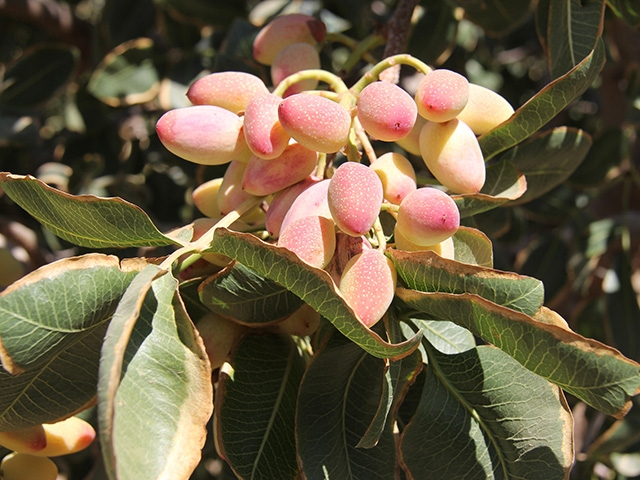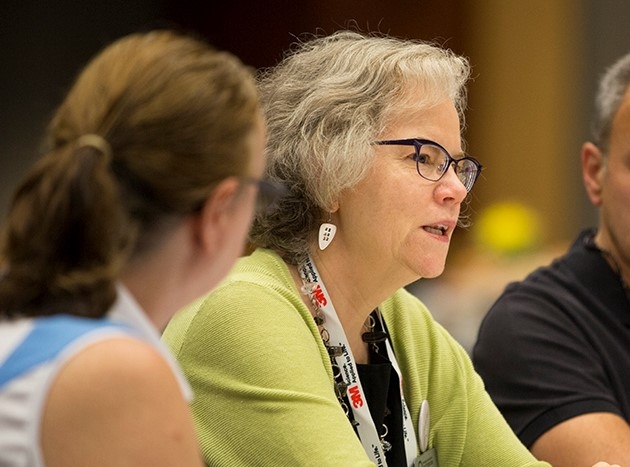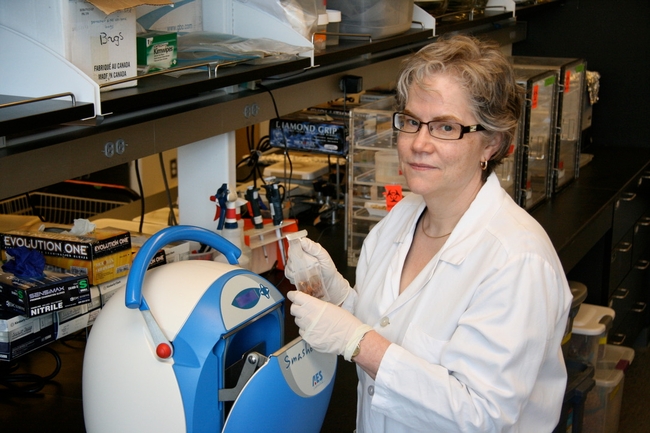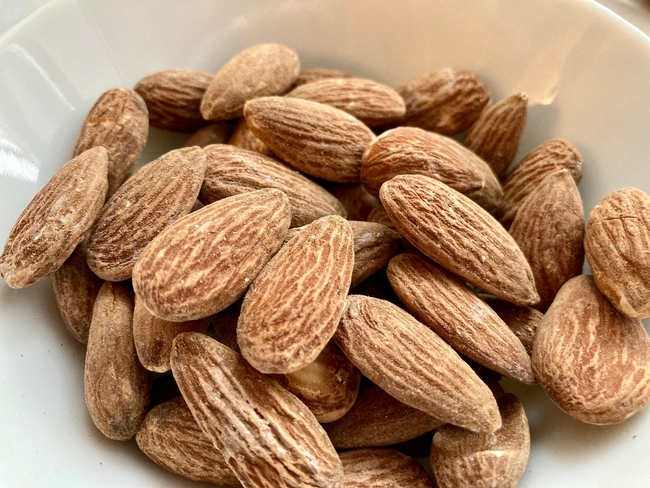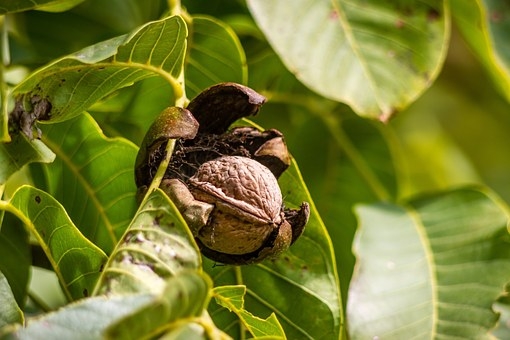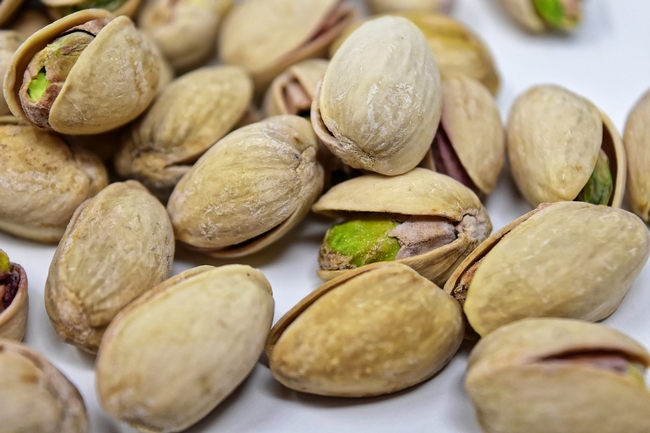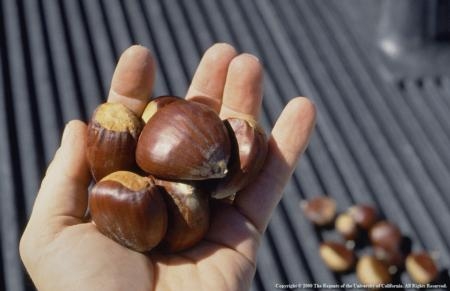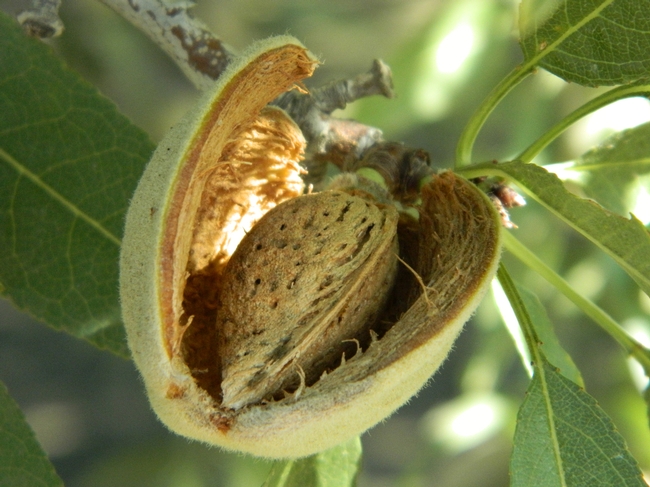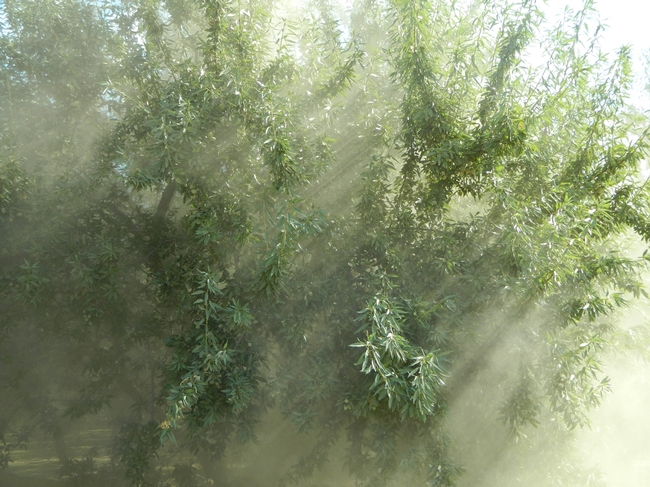Posts Tagged: nuts
NIFA funds $3.8 million project to find climate-resilient pistachio trees
Growers invited to participate in study by sharing their experiences
A multi-state team led by Patrick J. Brown has been awarded nearly $3.8 million over the next four years for a project to improve pistachio production as the industry faces warmer winters and scarcer water.
“We are at this unique point in history where we can do this,” said Brown, an associate professor in the UC Davis Department of Plant Sciences.
The project aims to ensure the industry can thrive in coming decades despite the challenges faced. Growers are invited to participate in the study, sharing what they already are trying in their own fields or supporting any aspect of the project. To discuss the possibilities, contact Brown at pjbrown@ucdavis.edu or (530) 752-4288.
The project includes research to ensure pollination, experiments to calculate irrigation needs amid water shortages, creating tools to improve public breeding programs, developing more efficient harvesting equipment, and economic analyses to ensure future pistachio cultivation is economically rewarding. Researchers hope to offer a guide for growers deciding whether to plant new orchards or remove existing ones.
“The success of California's pistachio industry, which is the top producer of the nuts in the world, has always relied on a strong collaboration between UC researchers and pistachio growers,” said project participant Florent Trouillas, a UC Cooperative Extension specialist in the UC Davis Department of Plant Pathology. “Research efforts must continue to address enduring and new challenges, improve sustainability and ensure the profitability of pistachio farming.”
The tasty, green nuts have blossomed into a $5.2-billion industry in California, thanks to their greater tolerance of dry lands and salty soils. The project aims to further improve their climate resilience by finding a rootstock that can thrive despite growing water scarcity and declining water quality projected over the next half-century. With millions of genetically distinct pistachio trees growing in the state, "we already have out there what may be the industry's next great rootstock," Brown said. "It's probably in some grower's field already. We just have to find it."
Researchers seek to pair that new rootstock with high-yielding scions – the producing part of the tree grafted onto the rootstock – to develop new combinations that can thrive in the different conditions across the state.
Trouble with “boy meets girl”
Pistachios, like many other tree crops, have male and female trees, and they require hundreds of hours of wintertime temperatures below 45 degrees Fahrenheit for the trees to flower in the spring. Wind blows the pollen from male flowers to female flowers, creating nuts.
Complicating the timing: Boy flowers and girl flowers generally require different amounts of winter cold to bloom. After a sufficiently cold winter, boys and girls flower together. But if the winter is warm, most of them will flower at different times, reducing pollination.
That happened in the winter of 2014-15, which saw unusually warm winter temperatures. The following fall, farmers harvested only half their expected crop, losing more than $1 billion, Brown said. Climate change is expected to provoke progressively warmer winters in the future, on average.
An additional complication: The boy scions come from a single variety, or cultivar, and the girl scions come from another single cultivar. "In California part of the problem is that we have been relying on a single male and single female cultivar," Brown explained.
A key part of this project will be to test new scions that can pollinate efficiently despite warmer winters. “We now have additional male and female scions released in the last 10 to 15 years, but we need more information on their chill requirements,” Brown said.
Growing importance of pistachio sector
With nearly 520,000 acres planted in California in 2021, pistachios are the fastest-growing tree nut crop in the state. Growers have doubled their plantings over the past decade, due to pistachios' drought tolerance and higher gross returns compared to other nuts, experts report. California dominates the industry, growing 99 percent of the nation's crop and nearly 60 percent of the world's crop, employing people in 47,000 full-time-equivalent jobs and creating $5.2-billion of total economic impact in 2020, according to American Pistachio Growers.
Brown's team is part of a wider effort at UC Davis to support the sector's growth and adaptation to climate change. Other department members participating in the project include co-directors Louise Ferguson, a UC Cooperative Extension pomologist, and Richard W. Michelmore, a distinguished professor and director of the UC Davis Genome Center. Also participating are Giulia Marino, a UC Cooperative Extension specialist; and Grey Monroe, an assistant professor.
Other UC Davis participants include Trouillas and Brittney Goodrich, a UC Cooperative Extension specialist in the Department of Agricultural and Resource Economics. The project also includes researchers from UC Merced, New Mexico State University and Purdue University.
The four-year project was among nearly $70 million in Specialty Crop Research Initiative grants awarded this fall by the National Institute of Food and Agriculture. The Department of Plant Sciences landed three of the 25 grants.
Read the NIFA grant summary.
Five questions with food safety expert, new AAAS Fellow Linda Harris
Professor of Cooperative Extension shares career story, appreciation for UC Davis
After growing up in northern British Columbia, in a remote smelter town called Kitimat (“an 8-hour drive from the nearest McDonald's”), University of California Professor of Cooperative Extension Linda J. Harris embarked on an academic journey that crisscrossed North America and eventually led to her election as a Fellow of the American Association for the Advancement of Science.
AAAS, the world's largest multidisciplinary scientific society and publisher of the journal Science, recently announced the election of its 2021 class, which will be inducted during its annual meeting, Feb. 17-20.
In addition to Harris – a faculty member in UC Davis' Department of Food Science and Technology – four other UC Agriculture and Natural Resources affiliates will be inducted: Helene Dillard, dean of the UC Davis College of Agricultural and Environmental Sciences; Kathryn Uhrich, dean of the UC Riverside College of Natural and Agricultural Sciences; and UC Berkeley Professors Rodrigo Almeida and Paolo D'Odorico.
Harris, a Certified Food Scientist, recently shared her thoughts on the value of extension work, her contributions to the field, UC Davis' support for women in academia, and the arc of her career journey.
How did you get your start in food science and microbiology?
I was interested in science at an early age. As an undergraduate student at the University of Victoria in Victoria, B.C., I enrolled in biochemistry at the suggestion of my high school biology teacher. In my second year, I switched to the University of Alberta in Edmonton, Alberta and decided to review the course catalog – a paper version! When I got to the section on Food Science, the applied nature of the field just sounded right and I never looked back.
However, I didn't do particularly well in microbiology as an undergraduate student – too much memorization for me. At the end of my B.S. I was ready for a job in the food industry and took the very first job I was offered – ironically enough as a dairy microbiologist in a quality control lab. Thankfully, that job opened my eyes to the possibilities in microbiology. What was memorization turned into something I learned through doing and I was hooked.
Two years later, I was ready to go back to school and contacted a professor of food safety microbiology at the University of Alberta who fortunately had funding for me. During my M.S. degree in food microbiology, he encouraged me to pursue the Ph.D. – which was not something I had ever considered – and that led me to leave Canada and head to North Carolina State University and a Ph.D. in microbiology in the Food Science Department, where I worked on a project related to the fermentation of sauerkraut.
I did have one publication related to food safety during my time at NC State, and when I took my first faculty position back in Canada [University of Guelph in Ontario] I continued to work in food safety, mostly with meat and meat products.
I am so glad that I saw the advertisement for my current position and that I followed my instincts to apply for the job. The opportunities to grow professionally and to work in the food safety area at UC Davis, within the Cooperative Extension network in California, and with collaborators across the U.S., and around the world, have been enormous, and I am extremely grateful for the path that led me here.
February 11 is the United Nations-designated “International Day of Women and Girls in Science.” How has UC Davis supported women in your scientific field?
My career in STEM [science, technology, engineering and math] has been very rewarding and many of the gender barriers I faced early on have been addressed. I feel very fortunate to have landed at UC Davis and I am thankful that there is a long history of addressing these barriers at this institution.
When I was hired in 1996, the Department of Food Science and Technology was about 25% women and both the department chair and dean of the college were women. I had never been in a department or college with so many women faculty, including in positions of leadership. It was a very important consideration in my move. Today our department is 50% women and I proudly served for five years as the second woman department chair, from 2016 to 2021.
As a first-generation university graduate raised by a single mother, you have a unique perspective in encouraging young people on their path toward a STEM career. What advice do you have for them?
To those contemplating a career in STEM, I would say: be open to new opportunities and adventures – you never know where they may lead you. Get involved in leadership in any capacity you can from student organizations or around other things that interest you. Skills that you learn with these types of activities will be invaluable to your career.
I am very much an introvert and had to work hard to overcome my fear of public speaking. In addition to leadership roles in student clubs, I joined Toast Masters while working on my Ph.D. These activities had a huge impact on building my confidence and helped influence my career choices.
In the AAAS Fellows announcement, it says you were elected for “contributions to the field of food safety microbiology, especially related to control of Salmonella and other pathogens in low-moisture foods and fresh produce.” Is that your proudest achievement in the field?
I am most proud of the work described by that short statement especially as it applies to California-grown commodities. I would say that my laboratory is best known for work with the tree nut industry – almonds, pistachios and walnuts, as well as a range of types of fresh produce grown in this state.
My laboratory has worked to understand behavior, movement, prevalence, and especially control of foodborne pathogens like Salmonella during production in the field through harvest and postharvest handling all the way through to consumer practices.
I have been fortunate to have many terrific state, national and international collaborators and an outstanding group of people working in my laboratory as we set the foundation for some of the food safety research in tree nuts and produce. It has been most gratifying to watch the significant growth in these fields of investigation, especially with a new generation of scientists that span the country and beyond.
Another “hat” you wear is UC Cooperative Extension specialist. How have you contributed to food safety knowledge and practices in our communities?
I think you will see that my “hats” are not that different. The research from my laboratory has provided the foundation for several commodity-based, food-safety risk assessments – for almonds, pistachios, and walnuts. And these, in turn, have been used in support of regulations or helped guide implementation of safer food industry practices. Our research has also informed several publications aimed at consumer handling of fresh fruits and vegetables and has been cited in regulations pertaining to fresh produce safety. It is gratifying to see our research being used.
My research and extension work are very integrated. One feeds the other. Because I have been able to interact with stakeholders (especially integral to my position as a Cooperative Extension specialist), I have been able to understand firsthand some of the pressing food-safety issues and challenges in California. These stakeholder interactions have largely formed the basis for most of my research and extension grant proposals over the years. The collaborations that have resulted from extension activities have opened doors and access to many unique opportunities for sample collection and research exploration.
‘Containergeddon’ at ports cost California farmers $2.1 billion in exports
New research estimates economic losses due to congestion, inefficiencies
Between wildfires, drought, a trade war and the COVID-19 pandemic, the last few years have been hard on California farmers. But recent research by agricultural economists from UC Davis and the University of Connecticut suggests that economic losses to California agriculture from recent supply chain disruptions may have an even greater economic impact.
In an article titled “‘Containergeddon' and California Agriculture,” researchers estimate that there was a 17% decline in the value of containerized agricultural exports between May and September 2021, resulting from recent port congestion. This amounts to around $2.1 billion in lost foreign sales, which exceeds losses from the 2018 U.S.-China trade war.
By the peak of the disruption in September 2021, nearly 80% of all containers leaving California ports were empty – about 43% fewer filled containers leaving California's ports than there were prior to the pandemic. And since 40% of filled shipping containers leaving California's ports are filled with U.S. agricultural products – around a third of which are from California – farmers in the state experienced significant lost export opportunities.
By September 2021, there were around 25,000 fewer containers filled with agricultural products leaving California ports than there were in May 2021. Processed tomatoes, rice, wine and tree nuts saw the sharpest average trade declines.
“We calculated California tree nut producers lost about $520 million,” said Colin Carter, UC Davis Distinguished Professor of agricultural and resource economics. “This was followed by wine with a loss of more than $250 million and rice with about $120 million lost.”
During the pandemic, an increase in household savings led to increases in consumer spending, with many of these additional goods being imported from Asia. California ports were overwhelmed by the added shipping containers coming in from Asia. At times, bottlenecks at Southern California ports left more than 80 vessels waiting off the coast to unload. Docks and warehouses ran out of space and the turnaround time for shipping containers nearly doubled.
Increased U.S. demand for imported goods from Asia also led to increased demand for empty shipping containers in Asia. Prior to the pandemic, freight rates for shipping containers from Shanghai to Los Angeles were already higher than the return trip from Los Angeles, but this gap widened significantly after COVID-19. By September 2021, the fee to ship a 40-foot container from Shanghai to Los Angeles had increased sixfold to $12,000 – while the return trip from Los Angeles was only $1,400.
The high prices for containers from Asia, coupled with shipping delays from the high volume of imported goods entering California ports, made it more profitable for shippers to return containers to Asia empty, rather than waiting at the ports to have them loaded with U.S. exports for the return trip.
“If port inefficiencies persist, the ramifications for California agriculture will extend beyond the immediate loss of foreign sales, as importers begin to view California as an unreliable supplier of agricultural products,” Carter said.
To learn more about the supply chain disruptions at California ports, and their effect on California agriculture, read the full article by Colin Carter (Distinguished Professor in the Department of Agricultural and Resource Economics at UC Davis), Sandro Steinbach, and Xiting Zhuang (assistant professor and Ph.D. student, respectively, both in the Department of Agricultural and Resource Economics at the University of Connecticut): “‘Containergeddon' and California Agriculture,” ARE Update 25(2): 1–4. UC Giannini Foundation of Agricultural Economics, online at https://giannini.ucop.edu/filer/file/1640021835/20297/.
ARE Update is a bimonthly magazine published by the Giannini Foundation of Agricultural Economics to educate policymakers and agribusiness professionals about new research or analysis of important topics in agricultural and resource economics. Articles are written by Giannini Foundation members, including University of California faculty and Cooperative Extension specialists in agricultural and resource economics, and university graduate students. Learn more about the Giannini Foundation and its publications at https://giannini.ucop.edu/.
Storing and preserving fresh nuts
One of the many wonderful things about California's climate is that in many regions of the state you'll find orchards of walnut, almond, pecan, pistachio or chestnut trees. You may be growing or planning to grow one or more of these trees in your yard so you can enjoy consuming the nuts. But do you know how to safely store, and preserve these fresh nuts?
There are just a few simple steps to follow. First, be sure to promptly remove the hull (the fibrous outer covering) that may still be remaining on some of the nuts. (If you have hulled walnuts before you will know they'll stain your hands brown, so you should wear gloves to hull walnuts.)
During this time of COVID-19, you may be tempted to wash your fresh nuts, but don't. Washing the nuts in their shell could increase their moisture and provide the environment for mold or bacteria to grow. Although not required to safely store the nuts, to decrease the likelihood of walnuts, almonds, pecans and pistachios developing mold, you may want to dry them. For walnuts and almonds, spread them out preferably single layer on a flat screen or tray that allows good air circulation. To prevent birds and other critters from making off with them while they are drying, cover them with another screen or plastic netting. Stir and move the nuts around daily.
It will take several days for them to dry. To determine when they are sufficiently dry, remove the shell from several nuts. Break apart the almond kernels, or walnut meat. If they are rubbery, they're not dried sufficiently. If they are crisp or brittle when broken, then they are dried adequately.
For pecans, they should be dried slowly in air temperatures 75–85 degrees Fahrenheit to prevent the shells from cracking. A fan blowing on the nuts will speed up the drying process, which can take up to 10 days. The pecans are dry when they're brittle and the membrane between the kernel halves separate easily from the kernels.
Pistachios can be dried in the sun on a plastic tarp, or they can be dried in the oven at 140–160 degrees Fahrenheit for 10–14 hours. They are dried when the kernels are crisp, but not brittle.
Before consuming or storing at room temperature, fresh home-grown walnuts, almonds, pecans, pistachios or chestnuts, or those bought at farm stands, pasteurize them to kill any insects or insect eggs. To pasteurize, simply place them in the freezer for 48 hours. (Make sure your freezer is set at 0 degrees Fahrenheit or lower.)
To store your walnuts, almond, pecans or pistachios, place them in clean moisture free, odor tight packaging, such as glass or plastic jars or other containers. The nuts can be stored shelled or unshelled. They can be stored up to a year in your refrigerator set at 40 degrees Fahrenheit or lower. Almonds can be stored in your freezer (set at 0 degrees Fahrenheit or lower) for a year or more, walnuts and pecans for two years plus, and pistachios for three years.
Chestnuts are different from the other nuts because they're more like potatoes than tree nuts. They usually develop mold within two weeks if stored at room temperature. Unshelled chestnuts can only be stored for two to three months in the refrigerator, but shelled chestnuts can be stored for a year in the refrigerator. Both shelled and unshelled chestnuts can be stored in the freezer for one year or more.
Enjoy your stored nuts throughout the year!
For more information about the UC Master Food Preserver Program, including the Food Preservation Video Library, visit mfp.ucanr.edu.
Enjoy your tree nuts: UC scientists help with regulatory compliance
California tree nut growers will soon have to comply with new agriculture water testing requirements under the Produce Safety Rule in the 2011 Food Safety Modernization Act (FSMA). University of California researchers and advisors are holding seminars to share information about the agricultural water requirements and proper water sampling methods in order to be in compliance with the regulations.
While irrigation or spray water is generally not the source of contamination, it is a vehicle for pathogens that are harmful to humans, especially on produce that is consumed raw; therefore, agricultural water was included as a part of the new regulation.
The UC Cooperative Extension office in Yolo County was the site of the first information sessions for nut tree growers/producers. It was an ideal location, as the fertile soils of the Sacramento and San Joaquin valleys are home to the largest tree nut production industries in the U.S. Some nuts are also grown in the coastal valley regions and Sierra foothills.
Good news for nut consumers
The new regulations and the focus on food safety practices, particularly within the nut tree industry, is of great interest because of the popularity of nutritious and delicious tree nuts. I for one am a big consumer. My day starts with almond butter on toast. That's followed by snacks of raw walnuts and dates. And there's always the handful of roasted pistachios to be grabbed for a salty treat.
It is lucky for someone who is nuts about nuts to live in California. The state is the nation's No. 1 walnut, almond and pistachio producer. California produces 80 percent of the world's almonds. We produce one million tons of almonds each year, followed by walnuts at nearly half a million tons, and pistachios at over a quarter million tons.
The California Department of Food and Agriculture reports the state's leading agricultural export products by value in 2015 were almonds ($5.14 billion), dairy products ($1.63 billion), walnuts ($1.49 billion), wine ($1.48 billion), and pistachios ($848 million).
Melissa L. Partyka, an ecologist at the UC Davis Western Institute for Food Safety and Security, (WIFSS) and Ronald F. Bond, a water quality researcher and field coordinator with WIFSS, are engaging local growers on issues of food safety and helping to educate them on not only the regulations but on ways to improve their water quality.
Partyka and Bond are staff in the UC Agriculture and Natural Resources' Vet Med Extension and Atwill Water and Foodborne Zoonotic Disease Laboratory, headed by UC Cooperative Extension specialist Rob Atwill, director of WIFSS.
They are affiliated with the Western Center for Food Safety, a Food and Drug Administration Center of Excellence, and are helping break down the regulations for the growers, regulations which can be a little overwhelming to the untrained.
Agricultural water, according to FSMA, is that water used to irrigate, treat, harvest, wash commodity or equipment on farm.
Growers are required to test water if it:
- Comes in contact with the harvestable portion of the commodity
- Is used to clean harvest equipment
- Is used to mix pesticides/fungicides applied to commodity
- Is used by harvest crews to wash hands
As of January 2016 growers will have 2 to 4 years (depending on farm size) to comply with most aspects of the Produce Safety Rule. Basically, the larger the production, the higher potential for risk to the consumer. How often a grower samples water depends on the water source. Well water requires an initial four samples, followed by one sample per year. Surface water, requires an initial 20 samples, followed by five samples per year. Water samples should be collected as close to harvest as is practical. During a long harvest season, samples can be spread out; in short harvest seasons, samples should be collected closer together; and in multiple harvest seasons, samples should be taken near each harvest if water is coming from the same source.
A full day workshop to be hosted by UC Cooperative Extension is planned for late June. Look for announcement of date, time, and location on the following websites: www.wcfs.ucdavis.edu, http://ucanr.edu, www.wifss.ucdavis.edu.

